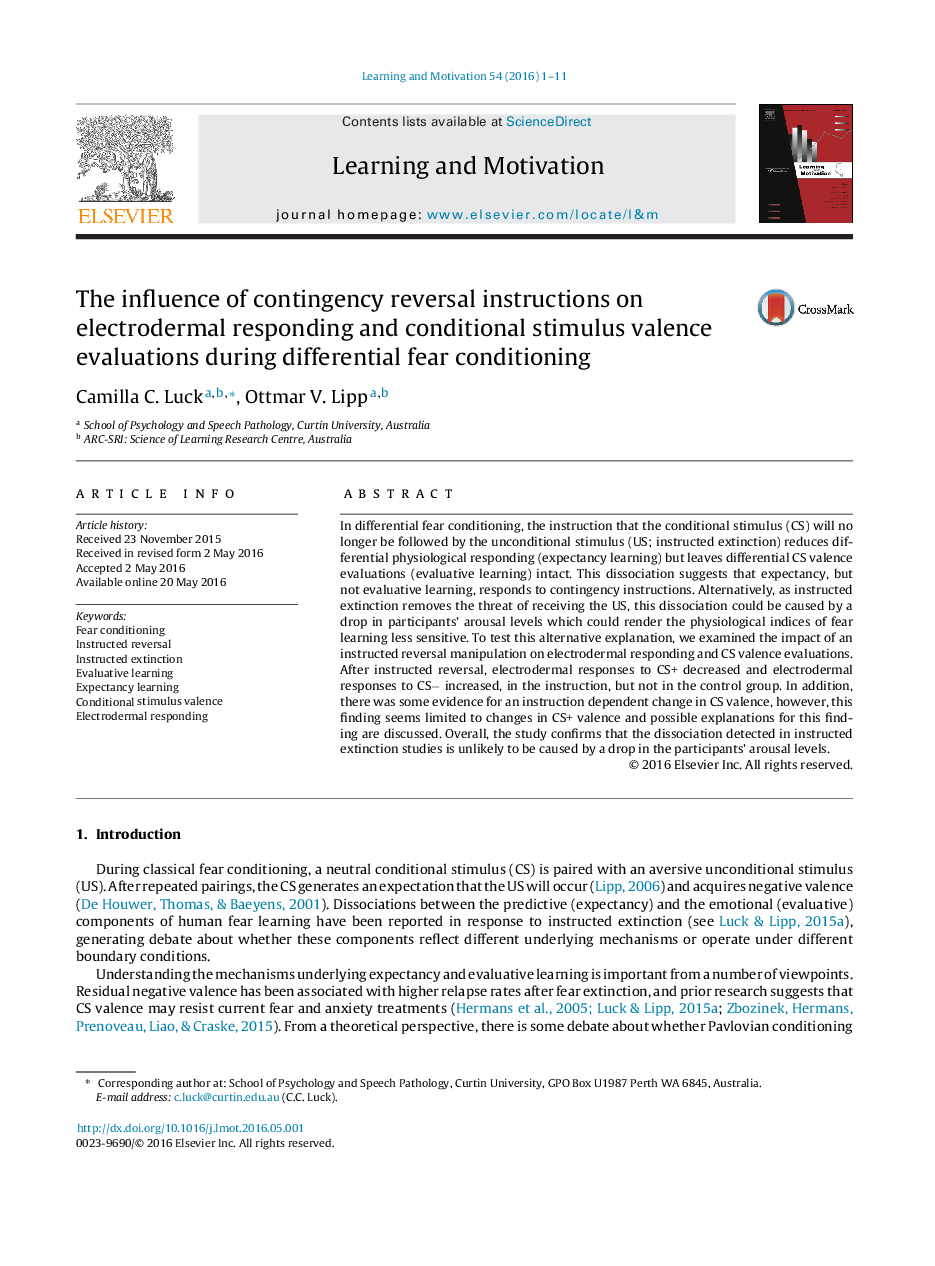| کد مقاله | کد نشریه | سال انتشار | مقاله انگلیسی | نسخه تمام متن |
|---|---|---|---|---|
| 918906 | 1473514 | 2016 | 11 صفحه PDF | دانلود رایگان |
In differential fear conditioning, the instruction that the conditional stimulus (CS) will no longer be followed by the unconditional stimulus (US; instructed extinction) reduces differential physiological responding (expectancy learning) but leaves differential CS valence evaluations (evaluative learning) intact. This dissociation suggests that expectancy, but not evaluative learning, responds to contingency instructions. Alternatively, as instructed extinction removes the threat of receiving the US, this dissociation could be caused by a drop in participants’ arousal levels which could render the physiological indices of fear learning less sensitive. To test this alternative explanation, we examined the impact of an instructed reversal manipulation on electrodermal responding and CS valence evaluations. After instructed reversal, electrodermal responses to CS+ decreased and electrodermal responses to CS− increased, in the instruction, but not in the control group. In addition, there was some evidence for an instruction dependent change in CS valence, however, this finding seems limited to changes in CS+ valence and possible explanations for this finding are discussed. Overall, the study confirms that the dissociation detected in instructed extinction studies is unlikely to be caused by a drop in the participants’ arousal levels.
Journal: Learning and Motivation - Volume 54, May 2016, Pages 1–11
